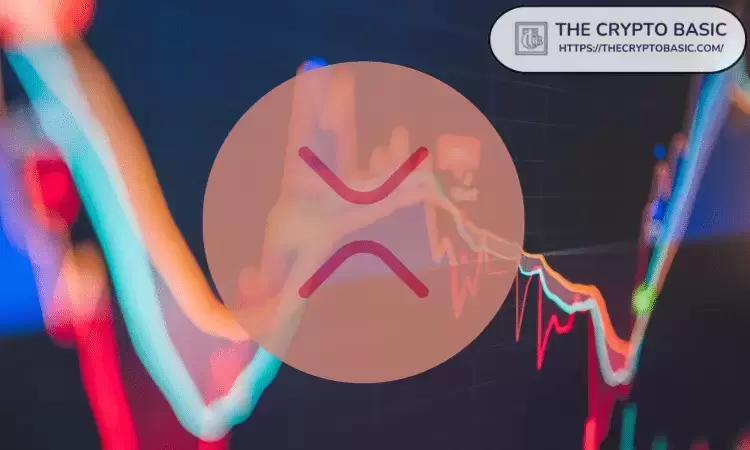 |
|
 |
|
 |
|
 |
|
 |
|
 |
|
 |
|
 |
|
 |
|
 |
|
 |
|
 |
|
 |
|
 |
|
 |
|
Cryptocurrency News Articles
The Evolution of Blockchain Infrastructure Paves the Way for Mass Adoption
Mar 16, 2025 at 01:00 pm
If we had stopped at dial-up internet, we’d never have gotten Netflix, real-time gaming, or cloud computing.
If we had stopped at dial-up internet, we’d never have gotten Netflix, real-time gaming, or cloud computing. The evolution of internet infrastructure paved the way for mass adoption. In the same way, Layer-3s are an inevitable evolution of blockchain infrastructure—removing friction, lowering costs, and making blockchain truly ready for mainstream users. Yet, critics continue to argue that they add unnecessary complexity.
This debate about the role of Layer-3s is an active one for us at Horizen Labs. The Horizen DAO has recently passed a vote to join the Base ecosystem—a pivotal governance decision that marks the beginning of Horizen’s transition to Base, Coinbase’s Layer 2 network, as an appchain specialized in privacy-preserving applications. We’re convinced by the Layer-3 thesis and believe that they represent the next evolution in blockchain scalability.
Horizen’s move to Base isn’t just about following trends, it’s about recognizing that a more modular, interoperable blockchain stack is the key to driving real-world adoption. We’re not just theorizing; we’re building.
The History
For crypto to reach a billion users, transactions need to be fast, cheap, and seamless. Layer-3s aren’t an academic exercise—they’re a practical response to the fact that even Layer-2s aren’t cheap enough for mass adoption. They also optimize for special features that are not currently possible on Layer-1s and Layer-2s—such as enhanced ZK capabilities.
Fundamentally, they address a core problem: If Ethereum (Layer-1) is expensive, Layer-2s help by processing transactions off-chain and only committing final state proofs to Layer-1. Layer-3s take this further by settling on Layer-2s instead of directly on Ethereum, creating a hierarchical model that minimizes costs at each level.
Layer-3s emerged naturally as blockchain architects sought greater efficiencies. StarkWare first outlined the concept in late 2021 under the term “fractal scaling.” Vitalik Buterin explored Layer-3 designs in 2022, suggesting specialized purposes beyond simple scaling. By 2023, major Ethereum scaling teams began implementing Layer-3 frameworks. Arbitrum introduced Orbit for launching Layer-3 “Orbit chains.” Matter Labs released ZK Stack for building zk-rollups as either Layer-2s or Layer-3s. These developments have pushed Layer-3s from theory to practice.
Not Everyone Is a Fan
Critics argue several points against Layer-3s: many believe Layer-2 solutions haven’t reached full maturity yet, and making Layer-3s is premature. Some argue they add complexity. But great technology is about making complexity invisible to users—just like the internet did. Some view Layer-3s as redundant, arguing their goals could be achieved by optimizing Layer-2 solutions.
However, a crucial realization is emerging that makes Layer-3s even more timely: even Layer-2s, built to enable faster, cheaper transactions, might still fall short. In some cases, a Layer-3 can abstract costs even further, ensuring near-zero gas fees. This cost abstraction is vital. Blockchain adoption requires transactions that are nearly free to the end user, and Layer-3s provide precisely this capability.
That brings a chain-abstracted future closer. Ultimately, that is better for onboarding new users, better for liquidity, and better for incentivizing the building of new dApps onchain. When users can transact without worrying about gas fees, adoption accelerates. Developers can build applications that wouldn’t be economically viable on higher-fee networks, and liquidity flows more freely when not constrained by transaction costs. The entire ecosystem benefits.
But abstraction isn’t just about cost savings; it’s also about usability and customization.
Customization and Connectivity
Layer-3s are also a natural response to the fear of ecosystem isolation. Chains don’t want to be siloed. Standalone Layer-1 blockchains face significant challenges: they must bootstrap their own security, attract users from scratch, and build an entirely new infrastructure. Many “Ethereum killers” like Cardano, Fantom, or Tezos have discovered how difficult this journey can be.
Layer-3s offer an alternative path where chains can remain connected to established ecosystems while providing better customization options: this is where their true potential lies. Application-specific chains can optimize for their unique use cases, whether it’s zero-knowledge proofs, gaming, DeFi, social networks, or enterprise applications. They can implement custom virtual machines, consensus mechanisms, or privacy features tailored to their needs, all while staying connected to the broader ecosystem, benefiting from its liquidity and security.
This blend of customization and connectivity makes these application-specific apps excel at what they do, ultimately benefiting the users.
A Pathway to Abstraction
People may claim that Layer-3s make web3 too complicated, but there’s
Disclaimer:info@kdj.com
The information provided is not trading advice. kdj.com does not assume any responsibility for any investments made based on the information provided in this article. Cryptocurrencies are highly volatile and it is highly recommended that you invest with caution after thorough research!
If you believe that the content used on this website infringes your copyright, please contact us immediately (info@kdj.com) and we will delete it promptly.
-

-

-

-

- Bitcoin (BTC) Price Shows Gradual Upward Trend with Higher Lows
- Apr 20, 2025 at 05:00 pm
- Crypto landscape is witnessing another wave of optimism amid the positive price movements. As per the data from the prominent crypto analyst “JAVON MARKS,” Bitcoin ($BTC) shows a gradual price uptrend with higher lows.
-

-

-

- title: Veteran trader Peter Brandt predicts that S&P 500, Bitcoin (BTC) and Ethereum (ETH) will see much lower levels by the end of the year.
- Apr 20, 2025 at 04:50 pm
- Starting with the US stock market, Brandt tells his 792,500 followers on the social media platform X that the S&P 500 looks bearish after breaching support at 5,800 and retesting the level as resistance.
-

-

- Optimism Bitcoin (OP) Is Showing Bullish Technical Indicators, Suggesting a Potential Breakout and Future Price Surge
- Apr 20, 2025 at 04:45 pm
- Optimism Bitcoin is showing bullish technical indicators, with growing institutional support and cautious market sentiment, suggesting a potential breakout and future price surge in the coming months.



























































